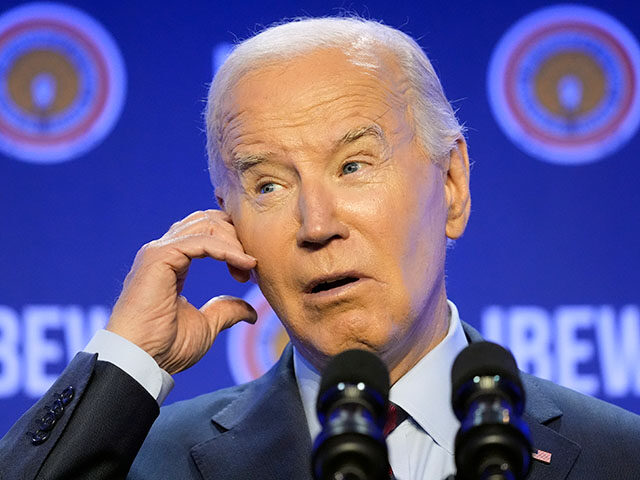Bidenomics: GDP Revised Down To A Slower 1.3% Growth Rate
 AP Photo/Alex Brandon
AP Photo/Alex Brandon
The U.S. economy grew less than previously thought in the first three months of the year, expanding at an annual pace of just 1.3 percent, revised government data showed Thursday.
The downward revision was primarily driven by data showing that consumer spending grew by significantly less than previously estimated.
This was the smallest expansion in gross domestic product in almost two years. The prior estimate had the economy growing at a 1.6 percent pace in the first quarter.
Consumer spending grew an an annualized pace of two percent in the first quarter, the new figures show, down from the previous estimate of 2.5 percent. In the second half of last year, consumer spending had expanded at a better than three percent rate.
The slowdown in consumer spending is likely related to inflation, which has pinched household buying power. What's more, most of the excess savings built up during the pandemic due to stimulus programs and Covid-related economic repression has been spent.
The biggest contributors to the slowdown since last year were a widening trade deficit and a smaller increase in business inventories. Businesses tend to cut back on inventories when they expect sales to be sluggish.
Trade and inventories are volatile components of GDP, often reversing direction from one quarter to the next outside of recessions.
The revised figures add to the challenges of the Biden administration's attempts to persuade the U.S. public that it has been a competent steward of the economy. Most U.S. voters disapprove of the job Biden has done on the economy, dragging down the president's overall approval rating.
The downward revisions were anticipated by economists, although the size of the revisions to consumer spending and overall economic growth exceeded the median forecasts.
The more sluggish growth figures are unlikely to provoke a change in monetary policy. Fed officials have said they need to see several months of data indicating that inflation is returning to their two percent target on a sustainable basis.
Source link

